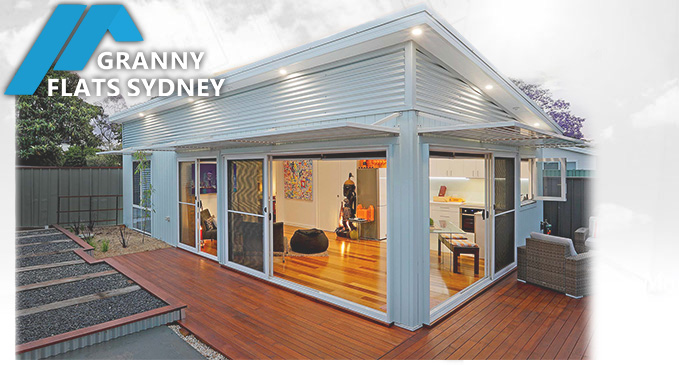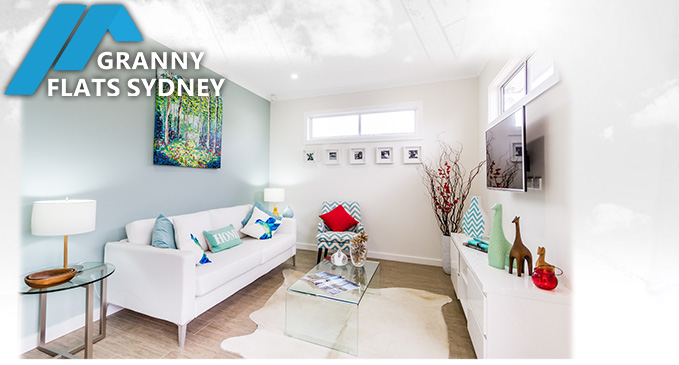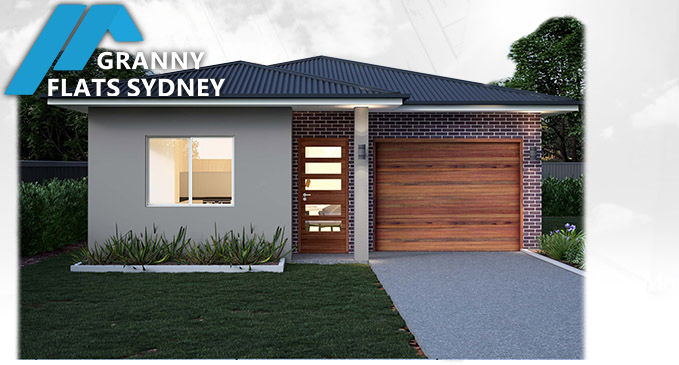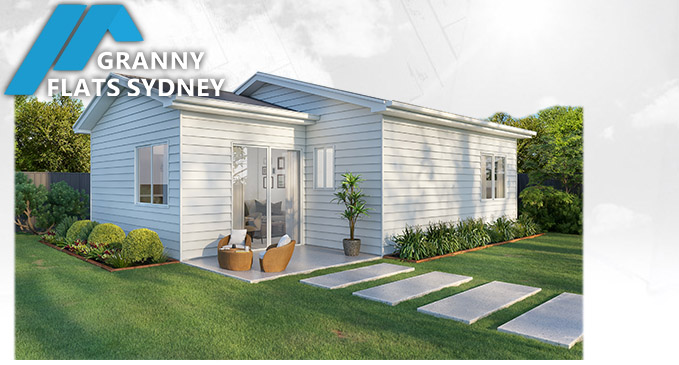Relocatable & Transportable Granny Flats – The Facts
Relocatable Granny Flats and Transportable Buildings- The Lowdown
We get quite a surprising amount of enquiries regarding relocatable granny flats (also called transportable granny flats) and how to ensure they comply with the Building Code and how to get them approved, so we thought we’d better write this guide to clarify the how-to’s and pitfalls of portable granny flats.
The Building Code of Australia (the BCA).
1. Minimum Wall Height
The thing to be remember when buying relocatable or transportable homes is that they’re usually sold as-is, and hence the seller bears no responsibility as to their compliance with any Australian Standards or Codes. They may look fine when you see them in a brochure or on eBay, but they may not be BCA compliant; which would make them illegal as a granny flat, studio or cabin in your back yard.
A surprisingly common failing we see with these types of structure is the internal wall height being less than the BCA minimum- which is 2.4 metres internal wall height. Most of the transportable homes you can buy have cathedral (or raked) ceilings. This means the ceiling is angled and follows the line of the pitched roof. What we often see is that the average height (top-height minus bottom-height, divided by two) is under the minimum prescription under the BCA, as stated above.
2. Structural Engineering
Transportable buildings usually come as a steel-framed structure. Under the BCA, all metal structures erected in Australia must have a Structural Compliance Certificate from a Civil Engineer which certifies that the structure complies with the BCA and all relevant Australian Standards. Quite often, an unsuspecting buyer will pick one of these structures up online through online auctions like eBay or via an online ad. So the structure might either be second-hand or the seller is shipping these structures in from overseas,usually China. The issue is that the seller doesn’t have the structural design plans and/or a structural certificate from an Australian Practising Structural Engineer. The whole project falls down when the buyer discovers that a Private Certifier (or their Local Council) CANNOT approve these structures without the correct certification.
BASIX CERTIFICATE (Energy Efficiency)
The good news is that relocatable and transportable homes do not need a BASIX Certificate. This is explained in a Circular published by the NSW Department of Planning: www.planning.nsw.gov.au/Policy-and-Legislation/~/media/A394A3848C74459D9CF257596E95660A.ashx
BUILDING APPROVAL
The important news about transportable dwellings, also known as ‘relocatable’ or ‘movable’ dwellings is that they unfortunately CANNOT be approved as Granny Flats under the ‘Affordable Rental Housing SEPP‘. According to the NSW Department of Planning, relocatable homes are not buildings as defined under the EP&A Act, and hence cannot be approved through the SEPP. The only way to get them approved is “under Section 68 of the Local Government Act”. Unfortunately, not many Councils (especially in the more affluent Sydney areas) allow relocatable homes, so be sure to ask your local Council before purchasing one of these structures. As noted above, the seller is not going to care whether you get approval or not, so it’s really up to you.
So the only way to get building approval is under a Section 68 application made directly to your Local Council. The approval process is similar to a DA (Development Approval), which means neighbours will be notified and they will have the opportunity to object. Council themselves may be averse to the design (in their view) since they often view them as too unsightly or ‘manufactured looking’. At the end of the day, Council may exercise the right to refuse the application, so be sure to apply before purchasing the structure. This makes it almost impossible if buying a structure off eBay since these listings are only online for a short time- usually a week or two. The very last thing you want is a structure ready for delivery and you can’t get it approved in your backyard! We’ve seen it happen too many times.
CONSTRUCTION CERTIFICATE
The good new is that if you do get your Section 68 Approval (S68), you won’t need a CC (Construction Certificate).
SUMMARY
We strongly advice anyone thinking of purchasing a relocatable home or transportable structure to read the Department of Planning Circular (see link above), talk to their local Council, check the wall-heights and be sure that the structure will be approved before clicking the ‘Buy It Now’ button. We’ve seen too many heart-broken mums and dads with a structure in a holding yard somewhere which they can’t site in their backyard. So we hope this article is helpful in avoiding such a disaster for someone out there.
If this article is helpful, please drop us a line and let us know, or you can just post a comment below if you’d like to add anything.
Regards,
Serge Panayi- Granny Flats Sydney






























4 replies on Relocatable & Transportable Granny Flats – The Facts
Serge your posts are brilliant and so informative and easy to understand, much easier then the nsw planning website. You really have established yourself as the authority on granny flats in NSW. thank you again for diverting time from your busy schedule to make these posts for us.
many thanks
Rob
Thank you so much Rob. It feels great to know we help people save time and money when developing their own back yards!
Serge Panayi
Granny Flat Approvals Sydney Pty Ltd
Hi Serge,
A NSW based portable building supplier states on their website…
“Portable Buildings are actually classified differently as the structure is pre-built in a factory and arrive to your site fully assembled, along with the fact that they are ‘portable’ which means they can be picked up and moved/transported at anytime. Temporary / Portable structures does not require council approval in the ACT or NSW”
Is the above statement true or false? Can I put a portable building in my backyard without council approval?
Kind regards, Joe
Hi Joe,
Portable, flat-pack and transportable structures are not ‘dwellings ‘and in NSW and can only be approved under a Section 68 at Council, IF that Council allows them.
Very few Councils will allow them, mainly rural Councils only. Can you imagine trying to get approval for such a structure in Vaucluse, a multi-million dollar suburb?
Not going to happen.
These portable structures are not permanent structures and CANNOT be approved as secondary dwellings (granny flats) either under the State SEPP.
I strongly advise that you check with your relevant Council and do your research before you purchase one of these types of structures for any purpose.
The Department of Planning is quite clear:
http://www.planning.nsw.gov.au/Policy-and-Legislation/~/media/A394A3848C74459D9CF257596E95660A.ashx
“Transportable home’ is a term commonly used by industry and consumers to refer to dwellings that are transported (partly or wholly pre-assembled) to a site then installed. ‘Transportable home’ however, is not a term defined or used in the Environmental Planning and Assessment Act .
Joe I’d ask this company if they guarantee a successful approval, or better still, demand that they provide you with an approval as part of their sales package. These companies are very keen and happy to make broad statements about approvals but won’t guarantee nor provide that service. We on the other hand provide a 100% money-back guarantee on our approvals. Buyer beware.
The other interesting aspect of these structures is that they sell for around $45,000 for a 45 sq m structure. You then need to add:
– $15,000 for transport
– $30,000 for hooking up plumbing, electricity and other services
So you’ve paid around $90,000 for a 45 sq m demountable/portable (how does it look?), when for that kind of money you can buy a 60 sq m granny flat, fully appointed with a pitched roof on a concrete slab, or piers if you’d like it to be movable in the future.
Food for thought?
Serge Panayi.